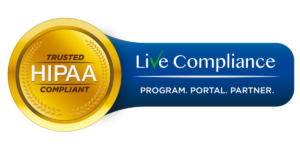Patient-clinician engagement is becoming an increasingly important part of the equation for facilities. With the sea of healthcare options available today, it’s becoming just as weighty a concern as other important considerations for choosing a care facility. Practices that keep patients engaged forge relationships – and business- for the long run, while such patients are 300% more likely to fulfill their medical requirements. For hospitals and clinics of the modern age desperate to stand out, bolstering the patient-clinician engagement is the differentiator, and remote patient monitoring solutions are one way to achieve that. Here’s how:
1. RPM eliminates obstacles hindering patient-physician interaction
Transportation can be a thorn in the foot for patients. Findings by Kaiser Permanente show that 1 in 3 Americans attest to just as much, citing a variety of issues that add to their transportation woes including:
- Travel expenses
- Long travel distances
- Poor infrastructure
At the end of the day, when the trouble to get to the doctor’s office seems too much, patients can throw in the towel and skip visits or check-ups, and engagement takes a huge blow.
Remote patient monitoring platforms can take away all the stresses that come with transportation, bringing care to the patient at the convenience of his or her home. No matter the frequency of visits, chronic care patients can especially be tended to without the traditional barriers that hinder access to their physicians.
2. Reminders by RPM technology can reduce no-shows
Research by ClinMed revealed that up to 1 in 2 patients miss appointments with their primary care provider, and some of the reasons include:
- Forgetfulness, which accounted for over 37% of no-shows in the above study that sampled 675 patients
- Personal issues, which were to blame for 16% of missed appointments
- Transportation difficulties that resulted in 7% of patients not making it to their physician’s, among others
A remote patient monitoring service can remedy most of these challenges. For example, such systems can be automatically set to send reminders and notifications to patients so they don’t forget important doctor dates. With close to 6 in 10 no-show patients confessing that an email or message notification would have made a difference, the importance of RPM becomes quite clear.
Additionally, by taking out transportation from the equation altogether, RPM can solve yet another problem that contributes to missed appointments.
3. Personalization of care puts patients smack in the center
Patients vary diversely in terms of goals, lifestyle, and health risks, and conventional approaches to healthcare that don’t take into account these factors can often make health solutions seem generic. The risk with this is that patients can feel detached from the care process and the decision-making in particular.
Thanks to real-time data monitoring, digital healthcare solutions such as RPM ensure the automated and daily tracking of healthcare data, which enables the customization of care plans to fit every patient’s unique needs and challenges. The result is that patients feel like care plans are meant just for them.
What’s more, with the frequency and ease of communication improving with RPM technology, patients get more information about their condition and are at the forefront of the management process. RPM allows patients to be more involved in their treatment plan by offering ready access to their own data, and physicians can hold their hands to provide education on viewing and comprehending their health status.
4. Facilities provide improved care oversight and support
In the conventional medical workflow, oversight becomes hard to implement once the patient is out of sight. The physician moves to other cases, and with the strain that comes with dealing with multiple patients at a time, a situation that has gone from bad to worse in light of the healthcare shortage we find ourselves in, it becomes an uphill battle to check in on every patient after they walk out the door.
What’s more, while trying to juggle multiple patients and the administrate tasks that come with this increased workload, quality care time tends to pay the price.
A remote patient monitoring service serves to be an extension of a facility’s care team ensuring:
- Additional care support for clogged workflows
- The elimination of iterative tasks that hinder patient-clinician engagement
- 24-hour oversight for patients regardless of where they live
Automation plays a huge role in the oversight process, as does the multi-faceted team that facilities can access with RPM providers such as Aura Health. Patients can get prompt support for any sudden concerns or needs.
Conclusion
RPM can bolster the patient-clinician relationship in a variety of ways. It hands patients the power to take charge of their own health, while physicians can customize care plans to meet everyone’s unique needs. Ultimately, an increase in engagement means more positive health outcomes, which is a win-win for both practitioners and those in their care. Would your facility like to enhance the patient-clinician engagement process, while saving time and driving revenue? You’ll be best served by Aura Health, one of the most revolutionary remote patient monitoring solution providers across America and beyond. Check out their website.
